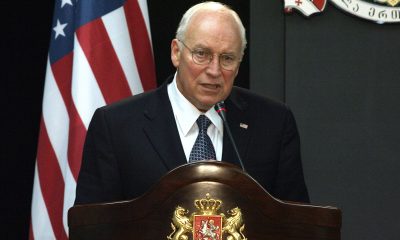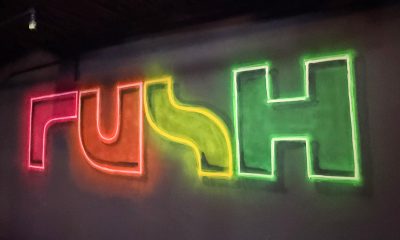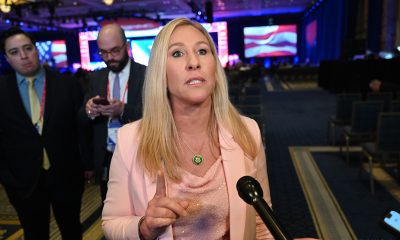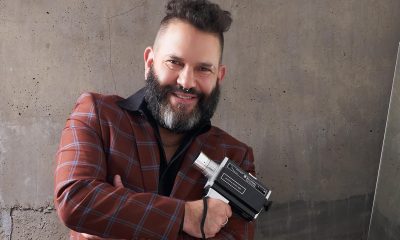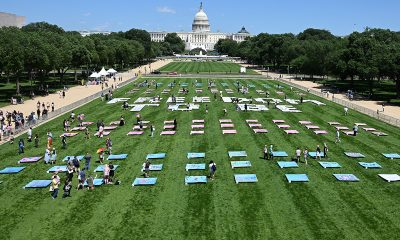Books
Despite the hype, Wenner memoir is a buzzkill
Reading this book is as exciting as perusing a spreadsheet
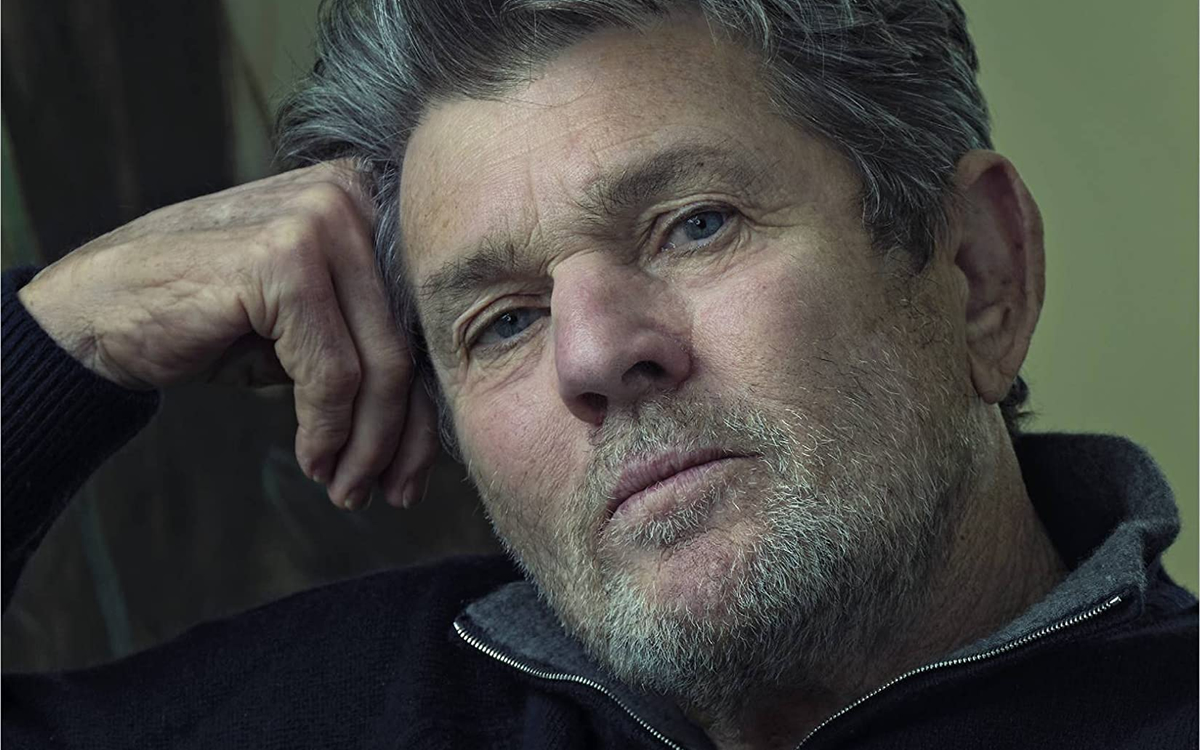
‘Like a Rolling Stone: A Memoir’
By Jann S. Wenner
c.2022, Little, Brown
$35/592 pages
“(I Can’t Get No) Satisfaction,” the Rolling Stones sang in 1965.
When reading “Like a Rolling Stone: A Memoir” by Jann S. Wenner, you may well find yourself singing along with the Stones.
Whether you’re a Boomer who grew up to the soundtrack of the rock ‘n’ roll, Woodstock generation (from the Grateful Dead to Jimi Hendrix to Bob Dylan to Joni Mitchell), a Gen-Xer who listened to punk rock, a millennial who voted for Barack Obama or a Gen-Zer who put Fleetwood Mac’s “Dreams” back on the charts, you’re likely curious about Wenner’s memoir.
In 1967, Wenner, 76, co-founded (with music critic Ralph J. Glisten) Rolling Stone, the magazine of youth culture and politics. Decades later, Wenner co-founded the Rock and Roll Hall of Fame.
Today, Wenner with his husband, designer Matt Nye and their three children, divides his time between Montauk, N.Y., Manhattan, and Sun Valley, Idaho. He and his ex-wife Jane are on amicable terms. Wenner and his former spouse have three sons.
Who other than Wenner, you’d think, digging into “Like a Rolling Stone,” would be better at taking us behind the scenes of the cultural history of more than half a century (from the late 1960s through the early 2020s)?
You’d expect, given the rock stars and politicians Wenner has known, worked with and interviewed (from Mick Jagger to John Lennon and Yoko Ono to Bob Dylan to Obama to acclaimed photographer Annie Leibovitz to Bill Clinton), that Wenner’s memoir would be brimming with dazzling anecdotes, wit, and insights.
Unfortunately, despite all of the hype and anticipation, “Like a Rolling Stone” is, by and large, a buzzkill.
Wenner, who grew up in San Francisco, has been associated with bold-faced names since he was a child. When he was hard to handle, Dr. Benjamin Spock stepped in to treat him.
His life was privileged from the get-go. His father was in the baby formula business and his mother was a novelist.
In boarding school, Wenner wrote a gossip column for the school paper and discovered (though he would be in a hetero marriage for decades) that he liked boys. He went on to college in Berkeley, Calif., during the height of the Free Speech movement. At 21, he was able to obtain the money he needed to start “Rolling Stone.”
Nearly every page of Wenner’s nearly 600-page memoir is infested with name-dropping. Celebs, tony nightspots and jet-setting locales appear more often than ants at a July 4th picnic.
But Wenner rarely reveals anything interesting about the famous names or his interactions with them.
Take Bruce Springsteen. What do we learn about the Boss from Wenner? That Springsteen at Wenner’s 60th birthday party sang, “Champagne, pot cookies and a Percocet/Keep him humming like a Sahre jet.”
Wenner’s name-dropping is a reminder that in 1986, Wenner with the Walt Disney Company bought Us Weekly, the celeb gossip magazine.
What’s most disappointing about the memoir is that Wenner says so little about what life has been like for him as a gay man.
It’s understandable that he, as a man of his generation, didn’t come out until the 1990s.
But, a fifth of the way into the 21st century, Wenner writes little about what it was like to be closeted for decades. Or how being closeted impacted Rolling Stone.
Wenner interviewed Bill Clinton extensively for Rolling Stone. Yet, he doesn’t reflect on DOMA or “Don’t Ask, Don’t Tell.”
Wenner wasn’t totally insensitive to what it means to be LGBTQ. One of his sons, Theo, talked to him about kids speaking of his “dad being gay.”
Wenner sent a condolence note to the parents of a Rolling Stones staffer and one of Andy Warhol’s lovers who died of AIDS. Rolling Stone published one of the first stories about AIDS.
But you can’t help wishing that “Like a Rolling Stone” had more of a queer quotient.
Thankfully, Wenner sometimes tells a revealing anecdote about a celeb. One day, he recalls, when he dined with John Lennon in a restaurant, a fan approached Lennon for an autograph. “Can’t you see I’m eating,” Lennon said to the fan, showing how annoying it was to have his privacy breached.
Yet, even with the glitz and glam, reading much of this memoir has the excitement of perusing a spreadsheet.
Wenner has done what neither God nor the Devil could do: he’s made his friend Bette Midler seem dull.
Wenner has led a fascinating life. His story is more interesting than anything a novelist, like his pal Tom Wolfe, could have imagined.
If only Carrie Fisher or Oscar Wilde had written his memoir.
The Blade may receive commissions from qualifying purchases made via this post.
Books
Pioneering gay journalist takes on Trump 2.0 in new book
Nick Benton’s essays appeared in Fall Church News-Press
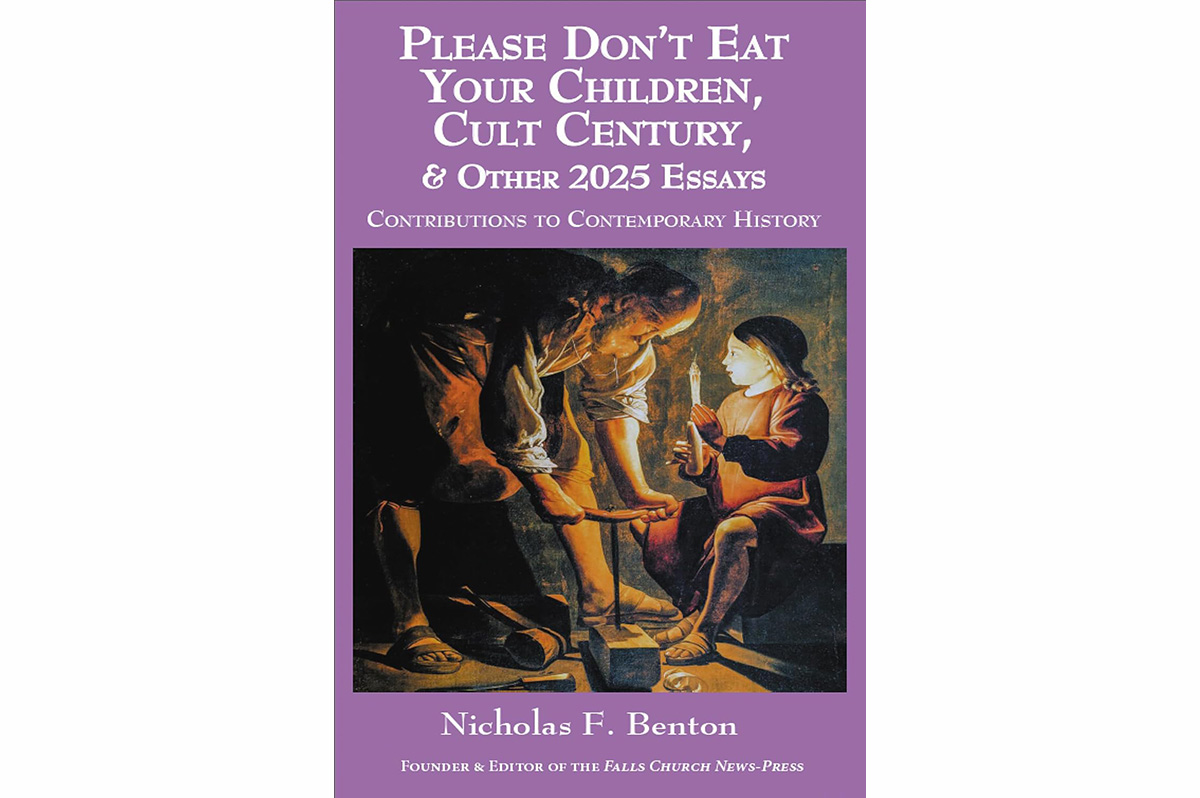
Nicholas Benton is a well-known local LGBTQ advocate and journalist and the longtime owner and editor of the Falls Church News-Press, a weekly newspaper.
In his eighth book out now, Benton offers a new set of remarkable essays all crafted in the first eight months of Trump 2.0 and its wholesale effort at dismantling democracy and the rule of law. Most were published in the Falls Church News-Press, but he adds a new piece to this volume, as an addendum to his “Cult Century” series, revealing for the first time his experiences from decades ago in the political cult of Lyndon LaRouche, aimed at providing a clearer grasp of today’s Cult of Trump.
His “Please Don’t Eat Your Children” set takes off from the satire of Jonathan Swift to explore society’s critical role of drumming creativity out of the young.

Below is an excerpt from “Please Don’t Eat Your Children, Cult Century, and other 2025 Essays.”
Please Don’t Eat Your Children
In his famous short essay, “A Modest Proposal: For Preventing the Children of Poor People in Ireland From Being a Burden to Their Parents or Country and for Making Them Beneficial to the Public,” author and Anglican priest Jonathan Swift (1667-1745) uses cutting satire to suggest that cannibalism of the young might help solve a battery of social ills.
As we examine our broken society today, it seems to me that reflecting on Swift’s social critique can be quite useful. Now we face a nation filled with anger and division and there is little to suggest any real solutions other than insisting people “don’t do that!” We can start out with the observation that young children, left to their own, are neither hateful nor cruel. How do they get that way later on in their lives? What drives them toward such emotional states and behaviors? It is not a problem only for the margins of society, for the extreme misfits or troubled. It is defining the very center of our culture today. Our divisions are not the cause, but the result of something, and nobody is saying what that is.
Swift doesn’t say what it is in his biting little essay. But it is implied by a context of a lack of bounty, or poverty, on the one hand, and an approach to it characterized by obscenely cruel indifference, on the other. He coined the phrase “useless eaters” in defining his radical solution. In Hitler’s Germany, that term resonated through the death camps and some in our present situation are daring to evoke it again as the current administration pushes radical cuts in Medicaid funding.
But while that refers to the old and infirm, mostly, it is the young we are talking about here. The problem is that our society is structured to devour our young and as they begin to find that out, they rebel. Not in all cases is this the practice, of course. Where there is little or no lack, things are different. We nurture our young, as we should, and we love them. Lucky is the child who is born to parents who are of means, and in a community where nurture is possible and valued. But even such children are ultimately not immune from facing a destiny of pale conformity battered by tightly delimited social expectations and debt slavery. If they have enough ambition, education and doors opened for them, some can run the gauntlet with relative effectiveness. Otherwise, our young are raised to die on battlefields, or to struggle in myriad other painful social conflicts aimed at advancing the world of their elders. In the Bible, there is a great admonition against this process that comes at the very precondition for the tradition it represents that begins with Abraham.
It is in the book of Genesis at the beginning of the Biblical story when, as that story goes, God commanded Abraham to kill his son, Isaac, as a sacrifice. As Abraham is about to obey, God steps in and says no. The entire subsequent eons-long struggle to realize Abraham’s commission by God to make a great nation that would be a light to the world would have been cut short right then if Abraham had slain his own son. The message is that all of the Abrahamic traditions, Judaism, Islam and Christianity, owe their source, and in fact are rooted, in God’s command to reject the sacrifice of children to the whims of their elders. The last thousands of years can be best defined in these terms, where nurture is pitted against exploitation of our young with, at best, vastly mixed results. Scenes like that at the opening of “All Quiet on the Western Front,” the World War I novel and film where a teacher rallies a classroom full of boys to enlist in the war, is bone chilling. Or, the lyric in Pink Floyd’s iconic song, Comfortably Numb, “When I was a child, I caught a fleeting glimpse out of the corner of my eye. I turned to look but it was gone. I cannot put my finger on it now. The child is grown, the dream is gone.”
Nick Benton’s new book is available now at Amazon.
The Blade may receive commissions from qualifying purchases made via this post.
Books
New book highlights long history of LGBTQ oppression
‘Queer Enlightenments’ a reminder that inequality is nothing new
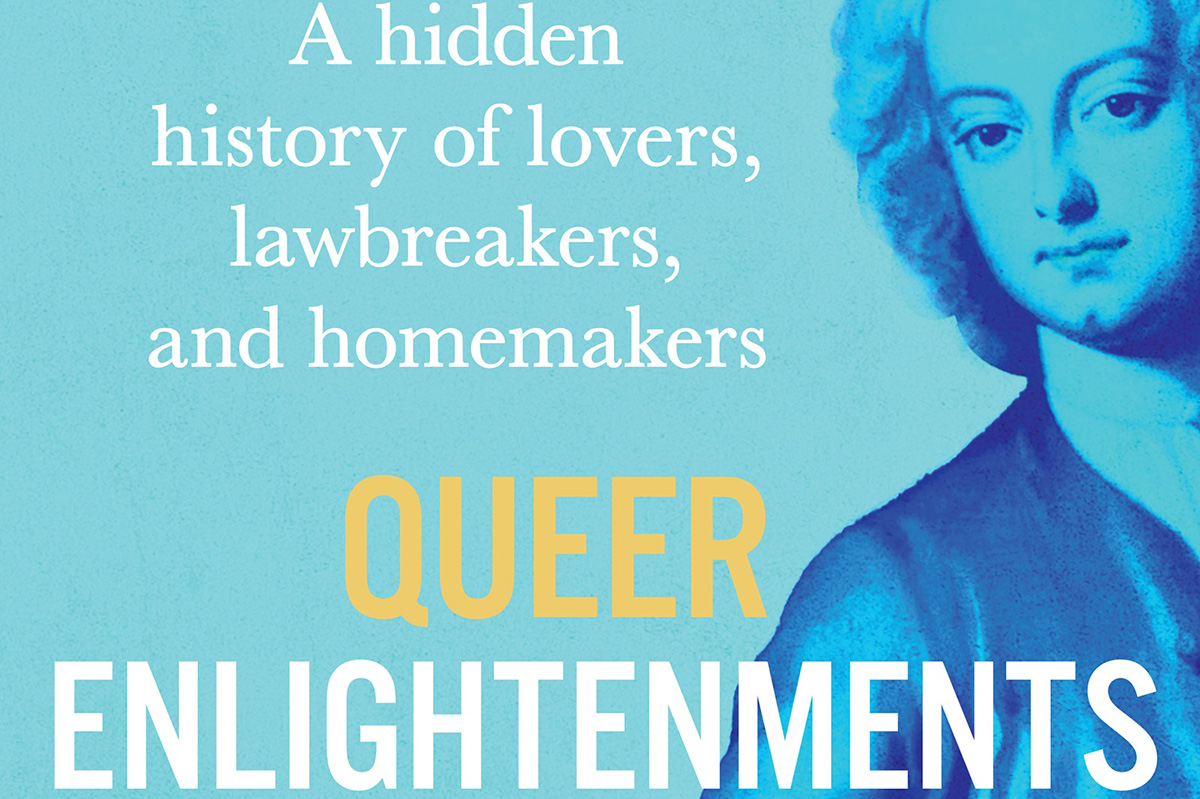
‘Queer Enlightenments: A Hidden History of Lovers, Lawbreakers, and Homemakers’
By Anthony Delaney
c.2025, Atlantic Monthly Press
$30/352 pages
It had to start somewhere.
The discrimination, the persecution, the inequality, it had a launching point. Can you put your finger on that date? Was it DADT, the 1950s scare, the Kinsey report? Certainly not Stonewall, or the Marriage Act, so where did it come from? In “Queer Enlightenments: A Hidden History of Lovers, Lawbreakers, and Homemakers” by Anthony Delaney, the story of queer oppression goes back so much farther.

The first recorded instance of the word “homosexual” arrived loudly in the spring of 1868: Hungarian journalist Károly Mária Kerthbeny wrote a letter to German activist Karl Heinrich Ulrichs referring to “same-sex-attracted men” with that new term. Many people believe that this was the “invention” of homosexuality, but Delaney begs to differ.
“Queer histories run much deeper than this…” he says.
Take, for instance, the delightfully named Mrs. Clap, who ran a “House” in London in which men often met other men for “marriage.” On a February night in 1726, Mrs. Clap’s House was raided and 40 men were taken to jail, where they were put in filthy, dank confines until the courts could get to them. One of the men was ultimately hanged for the crime of sodomy. Mrs. Clap was pilloried, and then disappeared from history.
William Pulteney had a duel with John, Lord Hervey, over insults flung at the latter man. The truth: Hervey was, in fact, openly a “sodomite.” He and his companion, Ste Fox had even set up a home together.
Adopting your lover was common in 18th century London, in order to make him a legal heir. In about 1769, rumors spread that the lovely female spy, the Chevalier d’Éon, was actually Charles d’Éon de Beaumont, a man who had been dressing in feminine attire for much longer than his espionage career. Anne Lister’s masculine demeanor often left her an “outcast.” And as George Wilson brought his bride to North American in 1821, he confessed to loving men, thus becoming North America’s first official “female husband.”
Sometimes, history can be quite dry. So can author Anthony Delaney’s wit. Together, though, they work well inside “Queer Enlightenments.”
Undoubtedly, you well know that inequality and persecution aren’t new things – which Delaney underscores here – and queer ancestors faced them head-on, just as people do today. The twist, in this often-chilling narrative, is that punishments levied on 18th- and 19th-century queer folk was harsher and Delaney doesn’t soften those accounts for readers. Read this book, and you’re platform-side at a hanging, in jail with an ally, at a duel with a complicated basis, embedded in a King’s court, and on a ship with a man whose new wife generously ignored his secret. Most of these tales are set in Great Britain and Europe, but North America features some, and Delaney wraps up thing nicely for today’s relevance.
While there’s some amusing side-eyeing in this book, “Queer Enlightenments” is a bit on the heavy side, so give yourself time with it. Pick it up, though, and you’ll love it til the end.
The Blade may receive commissions from qualifying purchases made via this post.
Books
A history of lesbian workarounds to build family
Fighting for the right to have and raise kids
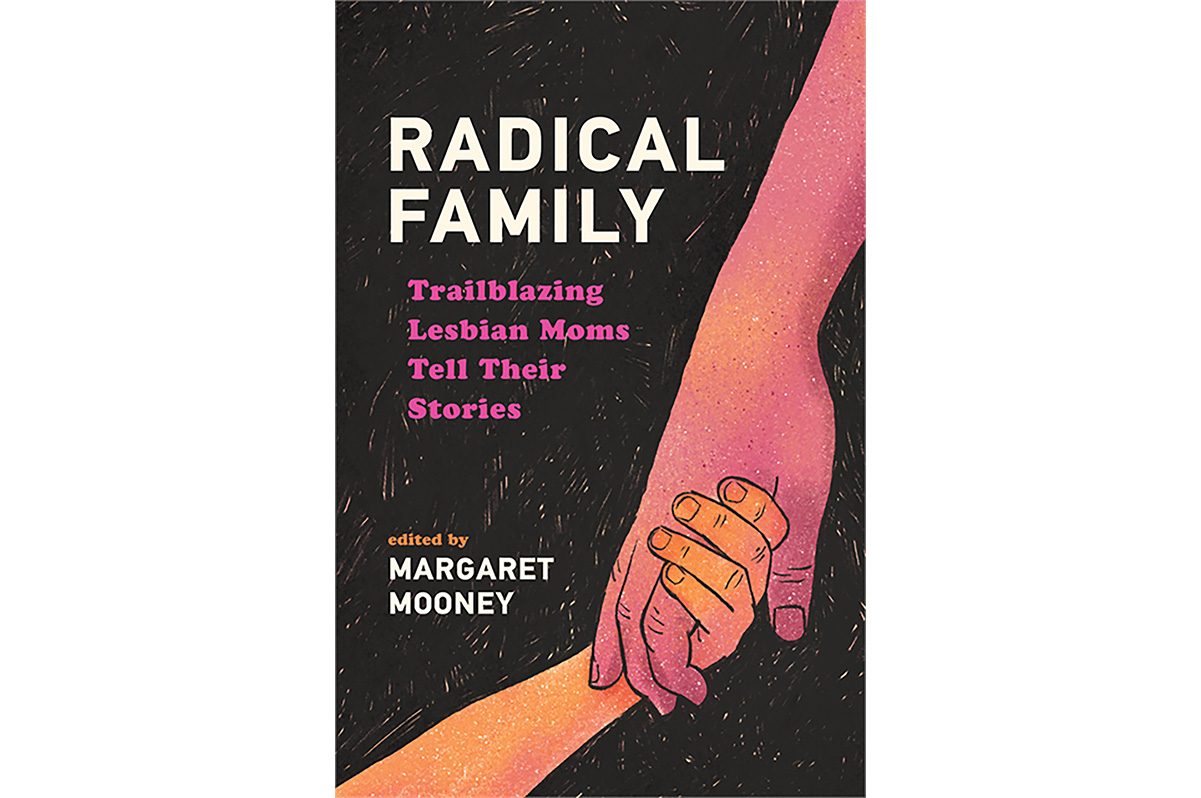
‘Radical Family: Trailblazing Lesbian Moms Tell Their Stories’
Edited by Margaret Mooney
c.2025, Wisconsin Historical Society Press
$20/150 pages
You don’t have a white picket fence with an adorable gate.
The other parts of the American Dream – the house in the suburbs, a minivan, and a big backyard – may also be beyond your reach. You’ve never wanted the joyous husband-wife union, but the two-point-five kids? Yeah, maybe that’s possible. As in the new book “Radical Family,” edited by Margaret Mooney, it’s surely more so than it was in the past.

Once upon a time, if a lesbian wanted to raise a family, she had two basic options: pregnancy or adoption. That is, says Mooney, if she was willing to buck a hetero-centric society that said the former was “selfish, unnatural and radical” and the latter was often just simply not possible or even legal.
Undaunted, and very much wanting kids, many lesbians ignored the rules. They built “chains” of women who handed off sperm from donor to doctor to potential mother. They demanded that fertility clinics allow single women as customers. They wrote pamphlets and publications aimed to help others become pregnant by themselves or with partners. They carefully sought lesbian-friendly obstetricians and nurses.
Over time, lesbians who wanted kids were “emboldened by the feminist movement and the gay and lesbian rights movement” and did what they had to do, omitted facts when needed, traveled abroad when they could, and found workarounds to build a family.
This book tells nine stories of everyday lesbians who succeeded.
Denise Matyka and Margaret McMurray went to Russia to adopt. Martha Dixon Popp and Alix Olson raised their family, in part and for awhile in conjunction with Popp’s husband. Gail Hirn learned from an agriculture publication how to inseminate herself. MC Reisdorf literally stood on her head to get pregnant. Mooney says that, like most lesbian parents then, she became a mother “without any safety nets…”
Such “struggles likely will feel familiar as you read about [the] desire to become parents…” says Mooney. “In short, these families are ordinary and extraordinary all at once.”
In her introduction, editor Margaret Mooney points out that the stories in this book generally take place in the latter part of the last century, but that their relevance is in the struggles that could happen tomorrow. There’s urgency in those words, absolutely, and they’re tinged with fear, but don’t let them keep you from “Radical Family.”
What you’ll see inside these nine tales is mostly happy, mostly triumphant – and mostly Wisconsin-centric, though the variety in dream-fulfillment is wide enough that the book is appropriate anywhere. The determination leaps out of the pages here, and the storytellers don’t hide their struggles, not with former partners, bureaucracy, or with roadblocks. Reading this book is like attending a conference and hearing attendees tell their tales. Bonus: photos and advice for any lesbian thinking of parenthood, single or partnered.
If you’re in search of positive stories from lesbian mothers and the wall-busting they did, or if you’ve lived the same tales, this slim book is a joy to read. For you, “Radical Family” may open some gates.
The Blade may receive commissions from qualifying purchases made via this post.



